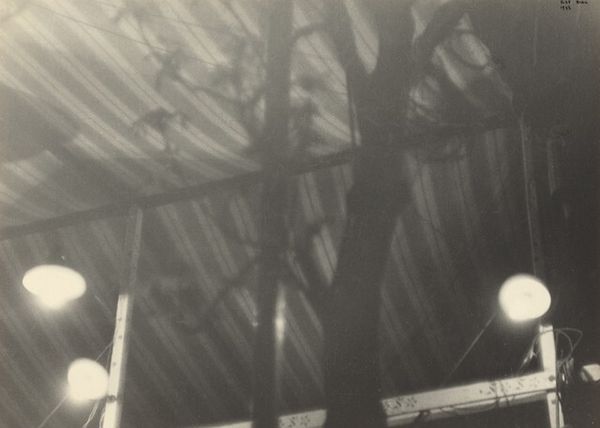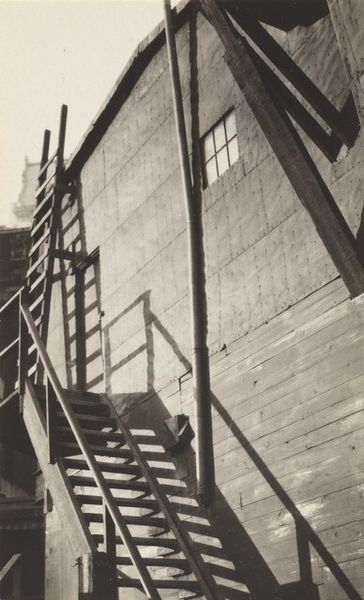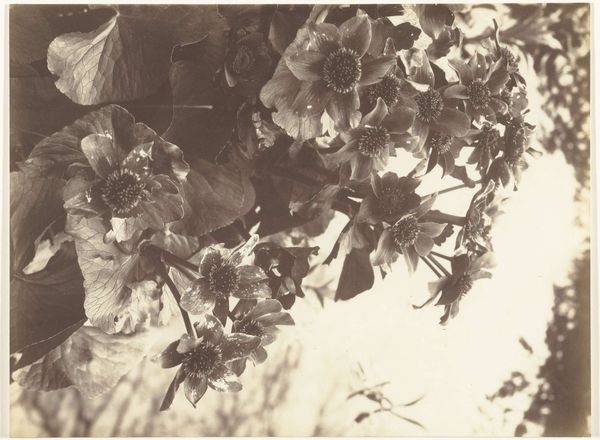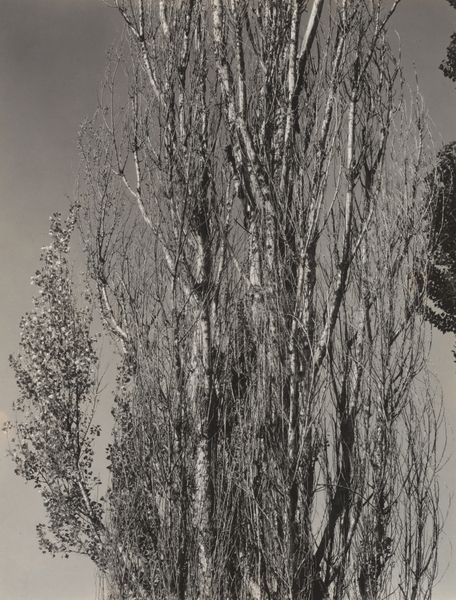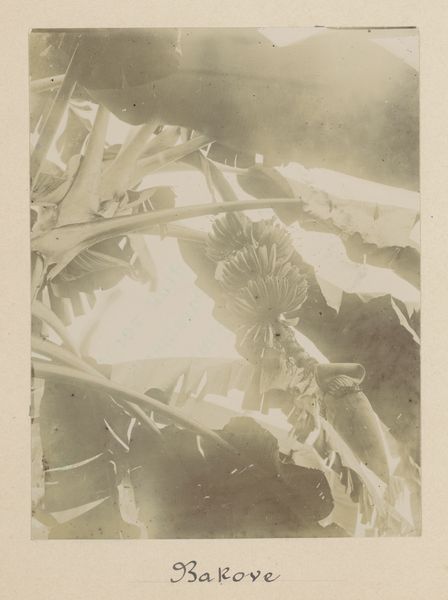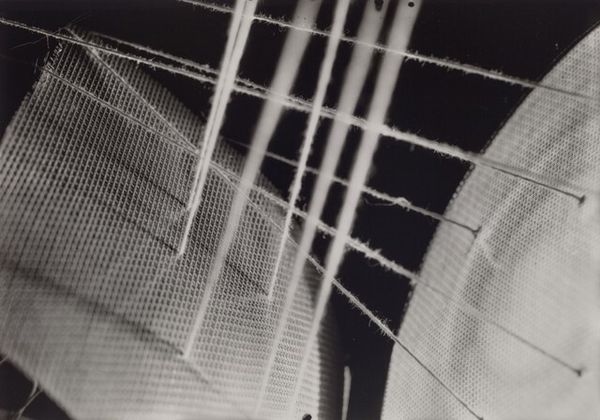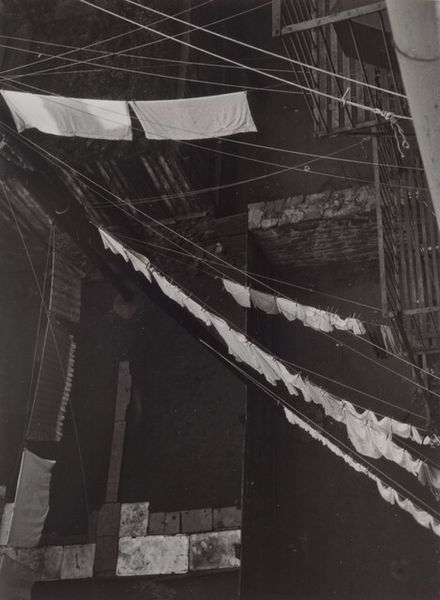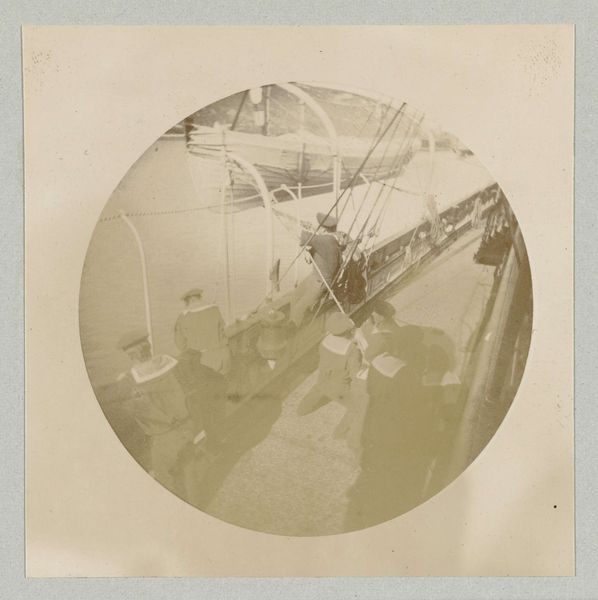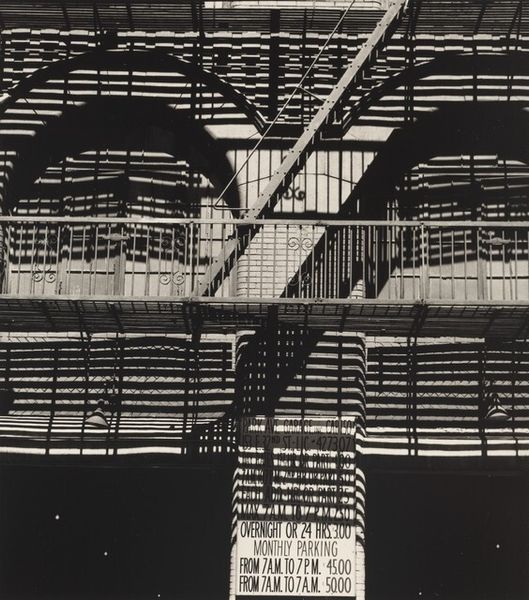
photography
#
black and white photography
#
landscape
#
black and white format
#
photography
#
geometric
#
monochrome photography
#
monochrome
Dimensions: image: 24.2 x 19.1 cm (9 1/2 x 7 1/2 in.) sheet: 30.8 x 30.3 cm (12 1/8 x 11 15/16 in.)
Copyright: National Gallery of Art: CC0 1.0
Editor: We're looking at Madoka Takagi's "Wave Hill" from 1989, a photograph rendered in monochrome. It seems to depict the interior of a greenhouse, all sharp angles and diffused light. There's almost a clinical, architectural quality to it, despite being in what’s typically a natural space. What strikes you most about this work? Curator: What intrigues me is the choice of subject. Greenhouses, traditionally spaces of cultivation and growth, here are reduced to stark geometries. Takagi focuses on the infrastructure, the bones of the greenhouse. Why do you think she chose to present this view? Editor: Perhaps to highlight the human control over nature, or the artifice of these cultivated environments? Curator: Precisely! Think about the social history of greenhouses. In the 19th century, they were symbols of wealth, of taming the exotic, displaying imperial reach. By 1989, that symbolism might have shifted, representing perhaps our increasing distance from truly wild nature, our reliance on manufactured environments, and control over them. Notice how the monochrome enhances this sense of sterile precision. The fan is an object that is blowing sterile and conditioned air, the light is covered by some cloth, not the natural light that nature needs to grow. Editor: I hadn’t thought about that shift in symbolism. Curator: And consider the politics of imagery. Photography, from its inception, has been linked to power, documentation, and control. Takagi's choice of black and white, coupled with the geometric composition, reinforces this idea of the greenhouse as a site of controlled growth and a potent commentary on our relationship with the natural world. Do you think she could be critiquing or embracing it? Editor: That’s a great point. Maybe she's presenting it without judgment, as simply the reality of our modern world, and allowing us to reflect on what that world implies about humanity. It can be viewed as both a form of documentation but also criticism about our role as custodians, or not, of our planet. I learned more about what the location represents! Thanks! Curator: Exactly, she makes us consider the complexities inherent in these spaces. Understanding the greenhouse, not just as a place for plants, but as a loaded cultural and political site enriches our interpretation of the photograph.
Comments
No comments
Be the first to comment and join the conversation on the ultimate creative platform.

